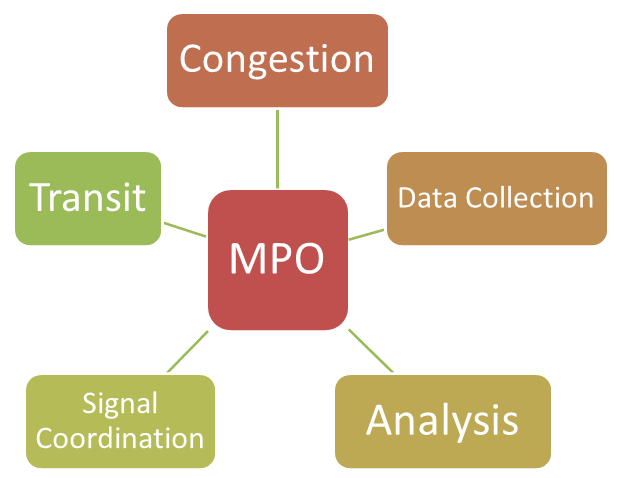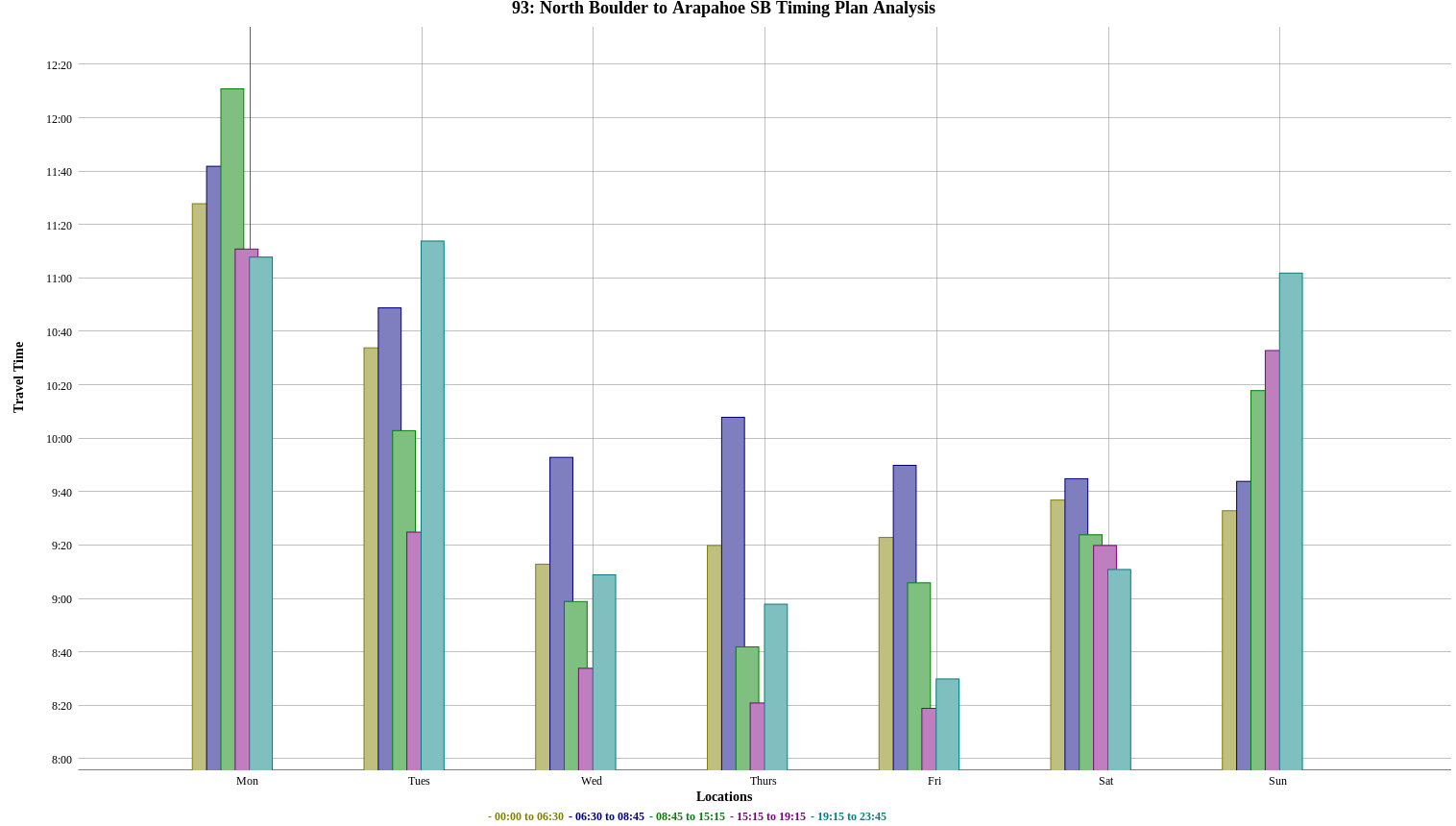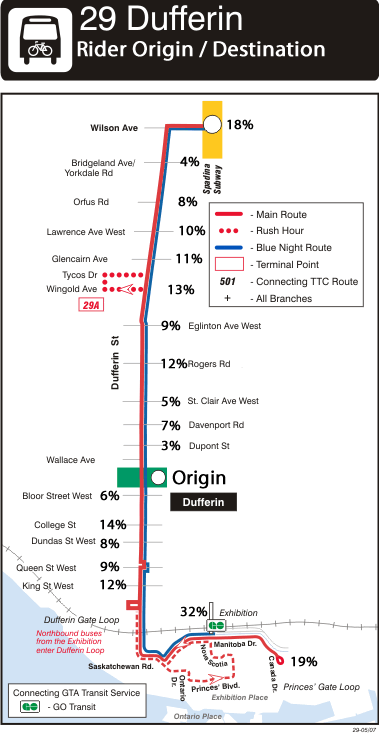Solutions for MPOs (Metropolitan Planning Organizations)
Metropolitan Planning Organizations, or MPOs, are faced with unique challenges for addressing transportation issues across multiple jurisdictions. Often these agencies influence policy and set guidelines for multiple municipalities across a metropolitan area and can help provide a centralized mechanism for sharing information across these agencies. In many places, an MPO is the focus for establishing policies for managing congestion, data collection, analysis, signal coordination and public transit.
Congestion
Congestion impacts users across multiple municipalities in many metro areas. This is a natural consequence of adjacent municipalities which share roadways and traffic. Unfortunately in many places, the information does not exist to effectively manage congestion within a municipality which means the sharing of this information is impossible. Acyclica provides a centrally hosted software management solution for accessing, analyzing and sharing information. Agencies can then coordinate signal timing or update their 511 systems in real-time.

Data Collection
In order to effectively manage congestion, data collection is a functional requirement. Acyclica provides the most reliable means of easily collecting essential traffic information for managing roadways. By using Acyclica’s technology, cities can easily collect congestion information such as speed, travel-time, turning movements, occupancy and level of service. Agencies can access it anywhere through our secure web-based Go software.
Acyclica Analytics
Data is only useful once it is transformed to information through sophisticated analysis. Acyclica provides some of the best tools for analyzing only the valuable data by filtering out and ignoring the noisy data. From this data any user can easily generate valuable custom reports or generic reports. Some of these tools include, but are not limited to:
- Origin / Destination Analysis
- Travel-Time
- Route & Segment Delay
- Intersection Delay by Approach
- Signal Timing Analysis
- Turning Movement Counts
- Speed & Corridor Analysis
Example: Signal Timing Analysis & Coordination
In addition, Acyclica’s analytic tools provide the ability to analyze signal timing plans to gauge their effectiveness. The figure below shows the analysis of a route by displaying the travel-time during each timing plan to help traffic engineers evaluate the need for signal retiming. And with Acyclica's centralized interface, agencies can share data among each other if desired. The ability to share data is left entirely to the user.

Public Transit
One of the most efficient ways of reducing congestion is to increase ridership of public transit. Once again, MPOs are very often the central hub between agencies and localized transit authorities, but understanding ridership is imperative for providing the services that people will use. Acyclica provides technology which can be used to determine exactly how people use transit by monitoring which stops people travel-between, how long they wait and how they transfer. This information can be used for system planning including identification of express or limited stop routes, route optimization by time of day and helping to asses if existing routes are efficiently used.
Example: Public Transit Origin - Destination
Acyclica has developed a number of applications specifically for helping transit agencies optimize and increase ridership. The challenge many transit authorities face is understanding where their customers are and where they need to go. With Acyclica’s Transit Origin - Destination (OD) application, this information can be constantly monitored to ensure that transit routes accurately reflect the needs of its users.
This technology works by anonymously monitoring where users get on and off a bus, metro or other means of mass conveyance. By associating this information with known stops, agencies can identify which users get on and off which locations which can provide valuable information when considering applications such as Bus Rapid Transit (BRT) or express services.
In this sample application, users can select an origin stop and view the percentage of people disembark at each location. This valuable planning tool can help to ensure that routes and riders are well matched.

Congestion Management: Data As A Service
By now, most of us have heard of Software as a Service or SaaS. It's a great thing to pay for software as a subscription: no more waiting for updates or worrying about how much the next version of your favorite software is going to cost. Upgrades are seamless and there is no worrying about the upfront capital expense.


